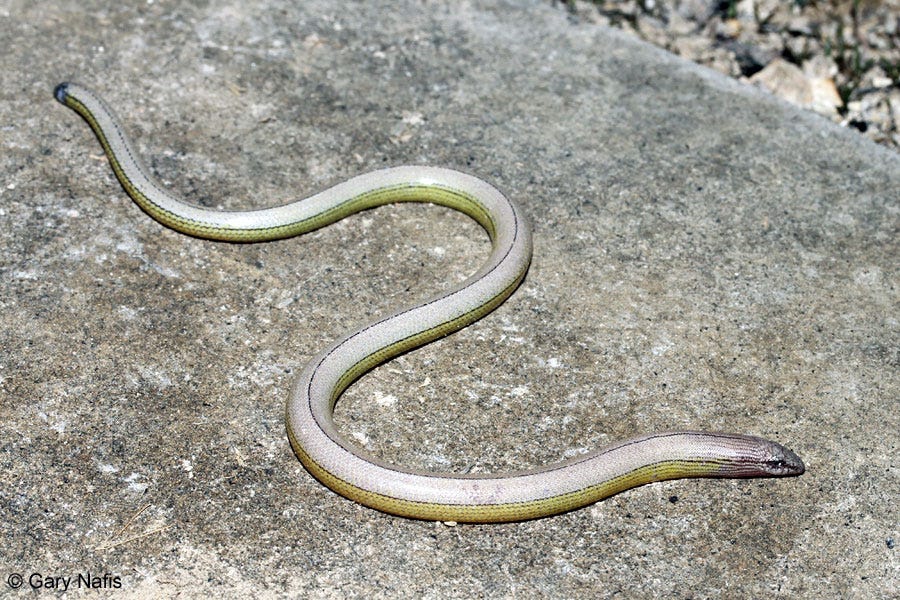News of the week
Federal mining position remains unfilled. New conservation funding may be in the works. And a California lizard is granted Endangered protection
Federal mining position remains unfilled
One of the weaknesses of the Biden administration that was pointed out by the press in his first year was the relative slowness in filling federal positions. Months dragged on with offices unfilled. Besides being a sign of the effectiveness of an administration, leaving offices unfilled can lead to agency disfunction and lack of effectiveness.
As recently noted by Appalachian Voices, an organization that advocates for the people and environment of the southern Appalachians, the Biden Administration, after almost a year and a half in the White House, has left the Office of Surface Mining and Reclamation Enforcement (OSMRE) unfilled. Appalachian Voices delivered a petition containing 2,284 signatures to the Interior Department this week urging the appointment of a new director for OSMRE. The petition notes:
[T]he ongoing decline of the coal industry increases the number of unreclaimed mine sites, threatening coalfield regions with polluted streams, damaged aquifers and heightened risks of landslides and flooding. A permanent director of OSMRE could ensure the agency tackles these unprecedented challenges while ensuring that every coal mine is fully reclaimed.
The office, part of the Interior Department, was created with the passage of the Surface Mining Control and Reclamation Act of 1977 (SMCRA). When President Jimmy Carter signed the law into effect, he began his remarks on the legislation by saying, “In many ways, this has been a disappointing effort.” Besides being a very Jimmy Carter thing to say, every word he uttered was true.
The purpose of the law was to compel mining companies, after decades of lax enforcement of loosely written state laws, to reclaim the lands that had been laid to waste by surface mining for coal. Carter believed that many of the provisions of the bill had been watered down, due to influence of the coal companies that the law was to regulate. Two previous bills, both with stronger provisions, had been passed by Congress, but they were both vetoed by President Ford. Carter’s main objection to the bill, however, was that it contained a provision that allowed for miners to blast and remove entire mountains, what has come to be known as mountaintop removal.1
After the decades of mountaintop removal laying waste to southern Appalachia, many may regard SMCRA as a total failure. Considering, however, that many states had close to zero regulation of surface or “strip” mining, SMCRA at least keeps some of the worst practices of mountaintop removal in check. As of this posting, there was no word from the Biden administration concerning the petition or the appointment of a new OSMRE director.
House passes funding for wildlife
On Tuesday, the U.S. House of Representatives passed the Recovering America’s Wildlife Act. The act, if passed, will amend previous wildlife legislation to provide $1.3 billion to restore and conserve wildlife and wildlife habitat in territories and Tribal lands across the United States.
The 231-190 vote fell along Democratic/GOP lines, although GOP House members from Ohio, Michigan, and New York voted for the bill, and Democrats from Connecticut voted against it.
The act specifies that At least 15 percent of its funding must be spent on species listed under the Endangered Species Act or are considered Threatened or Endangered under tribal law. States with the greatest conservation needs would receive the greatest amount of funding. Hawaii, with almost one third of plants and animals listed as Endangered, would receive $60 million a year under the act, the largest amount that any state could receive. The act would also provide additional short-term funding for the U.S. Fish and Wildlife Service. With the Democrats having the slimmest of margins in the Senate, the bill faces an uncertain future.
Lizard granted Endangered status by the state of California
By a unanimous decision, the California Fish and Game Commission agreed to protect the Temblor legless lizard under the state’s Endangered Species Act. This decision gives the lizard legal protection for at least a year, during which time the lizard’s status will be reviewed—legally mandated by the decision—to determine if it qualifies for formal protection by the state of California as Endangered.
Just by looking at the lizard, most everybody would assume that it is a snake, because it has no legs. But snakes have no eyelids, and this slender lizard has eyelids. It also has a blunt tail, a shovel-shaped snout, and smooth shiny scales.

The Temblor legless lizards favor loose, moist, warm soil of sparsely vegetated beach dunes, chaparral, woodlands, and desert scrub. They like to hide under rocks, fallen logs, and leaf litter, and are sometimes found in suburban gardens. The lizards live only in Kern and Fresno Counties, which lie inland between Los Angeles and San Francisco.
The lizards have the unfortunate problem of having their habitat right where there happens to be a lot of oil. Their main population lives around the Kern River Oil Field, the oilfield with the densest amount of drilling operations in the United States. Wrangling over permits for further drilling in the oil field has been going through the courts for years. And 98 percent of the lizard’s habitat is open to oil and gas development.
If oil weren’t enough, urban sprawl and industrial development threaten the legless lizard. Invasive grasses and nonnative wild pigs can transform their habitats, too. And the bugaboo that messes with everything, climate change, also threatens the animal.
For more environmental science & news follow me on Twitter @EcoScripsit.
“Carter Signs Strip-Mining Bill,” New York Times, 4 August 1977 sec XX p




